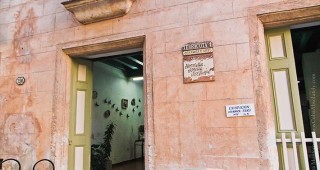
The north-west corner of the square is occupied by the 18th-century Casa de los Condes de Peñalver, which has at different times served as a post office, a bank and a school. Today, it houses the Centro de Arte Contemporáneo Wifredo Lam, one of Havana’s best art galleries.
This state-run cultural complex was inaugurated in 1983 for the study, research and promotion of contemporary visual arts in developing countries of Africa, Latin America, Asia and the Caribbean. It is today one of Cuba’s most important galleries. Named after one of Cuba’s most famous modern painters, Wifredo Lam (1902-1982), of Afro-Chinese origins, the center has a valuable collection of over 1,000 pieces acquired through donations by the artists, purchases made to institutions and artists, and prize-winning works at the Art Biennials. Numerous exhibitions have been held within and outside Cuba with the center’s collections. It also contains a rich bibliographical and documentary heritage on contemporary visual art from Asia, Africa, the Middle East, Latin America and the Caribbean. Since its opening, it has shown interest in promoting the different manifestations of visual art–including painting, sculpture, photography, printmaking, installation, drawing, art video, architecture and popular art–of the so-called Third World around the globe
The gallery also hosts temporary, often non-conventional, exhibitions of Cuban contemporary art and international travelling exhibitions. The building houses a beautiful museum with a bookshop, café, library, galleries, conference rooms, projection halls and an interior courtyard. The institution is also responsible for the organization of the Bienal de la Habana, Cuba’s international art fair.
Adimission details: CUC 3; free under 12








 Eclectic
Eclectic





